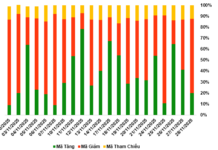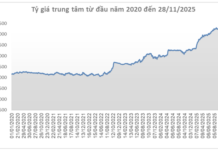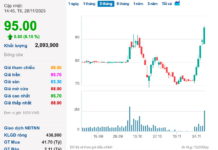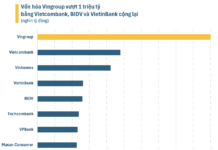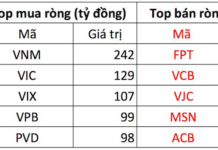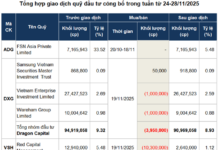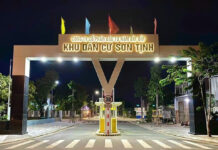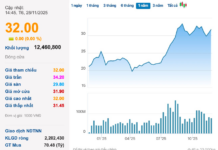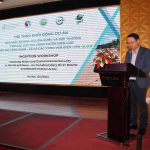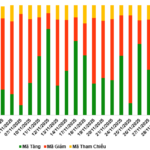Can you give us an overview of the irrigation system in Vietnam?
Irrigation plays a vital role in Vietnam’s social and economic development and national security. Over the past 79 years, the irrigation sector has made significant contributions to environmental protection and improvement, playing a crucial role in poverty eradication, rural development, and industrialization of the country.
The World Bank has repeatedly recognized Vietnam as a country with one of the most extensive and advanced irrigation infrastructures in the world. Vietnam’s irrigation system currently boasts 290,000 large and small pumping stations, 170,000 canal structures with a total length of millions of kilometers, and 7,342 dams and reservoirs. The country has constructed over 900 irrigation systems, serving an area of 200 hectares or more, including 122 medium and large-scale systems serving over 2,000 hectares. The irrigation system not only provides water for agricultural production but also serves as a living space and enhances the rural landscape and architecture.

What measures does the irrigation sector take to ensure water security?
Vietnam is estimated to have 800 rivers and streams, 62.8% of which flow from other countries. With the increasing social and economic development, the demand for water is growing, not only for agriculture but also for domestic, hydropower, and industrial needs. Meanwhile, upstream countries on major rivers such as the Mekong, Red, and Ma rivers are building numerous hydropower dams, reducing the water flow into Vietnam. Additionally, Cambodia’s plan to dig a canal from the Mekong River to the sea is expected to further decrease water flow to the Mekong Delta.
“Vietnam is no longer water-abundant but has become a water-deficient country. Therefore, the Political Bureau issued Conclusion No. 36 on June 23, 2022, on ensuring water security and dam and reservoir safety by 2030, with a vision towards 2045. The Prime Minister also issued Decision No. 1595/QD-TTg to approve the Action Plan to implement Conclusion No. 36-KL/TW of the Political Bureau on ensuring water security and dam and reservoir safety.”
From the perspective of the Irrigation Department, under the Ministry of Agriculture and Rural Development, we view water security not only in terms of water quantity but also water quality, water use efficiency, water productivity, and flood control.
A new way of thinking about irrigation has been proposed by the Ministry of Agriculture and Rural Development, shifting from a drought prevention strategy to proactive water resource management, embracing the philosophy of “water-centric.” To achieve this, several measures need to be implemented.
First: Improve the institutional framework and policies to ensure water security and dam and reservoir safety.
Second: Enhance the capacity and effectiveness of state management regarding water resources, dam and reservoir safety.
Third: Improve planning, investigation, and forecasting of water resources.
Fourth: Enhance water storage, regulation, and distribution capabilities, as well as drainage systems, to serve agricultural production and daily life.
Fifth: Adjust agricultural production seasons and change crop structures to adapt to water scarcity.
With the rainy season approaching and the issue of unsafe dams being prominent for many years, what are your thoughts on this matter?
Currently, there are over 7,300 reservoirs in Vietnam, including 13 large reservoirs directly managed by the Ministry of Agriculture and Rural Development, ensuring safety. For medium-sized reservoirs, which number over 3,000, specialized units are assigned to manage and ensure their safety. The remaining 4,300 small reservoirs are managed by local authorities and are mainly operated by cooperatives and organizations. These small reservoirs pose a significant risk of safety hazards. Among them, the Irrigation Department has identified 330 reservoirs with alarming safety concerns.
“The Irrigation Department has identified 330 reservoirs with alarming safety concerns.”
In terms of management, we have Government Decree 114/2018/ND on dam and reservoir safety management. The Ministry of Agriculture and Rural Development also regularly issues directives on inspecting and controlling the safety of reservoirs during the rainy season, especially the small reservoirs managed by cooperatives. The Irrigation Department has provided guidance on ensuring reservoir safety and regularly organizes training to handle emergencies.
In preparation for the 2024 rainy season, we have reported and advised the Ministry to report to the Prime Minister on the protection of irrigation infrastructure safety, including reservoirs. We will continue to inspect and urge local authorities to strengthen the management of reservoirs, especially those at risk of safety hazards during this rainy season.
What solutions have been implemented to address the increasing salinity intrusion in the Mekong Delta?
In recent years, salinity intrusion in the Mekong Delta has become more severe, especially during the 2014-2016 and 2020-2024 periods. In the dry season of 2024, according to actual measurements of average monthly flow at the two upstream stations of the Mekong River, Tan Chau on the Tien River and Chau Doc on the Hau River, compared to the pre-2012 period (when upstream reservoirs were not extensively built), the initial dry season flow decreased by 5-12%, and from the middle to the end of the dry season, it increased by 22-50%. The salinity intrusion patterns in the river mouths and coastal areas have changed significantly…
https://postenp.phaha.vn/chi-tiet-toa-soan/tap-chi-kinh-te-viet-nam
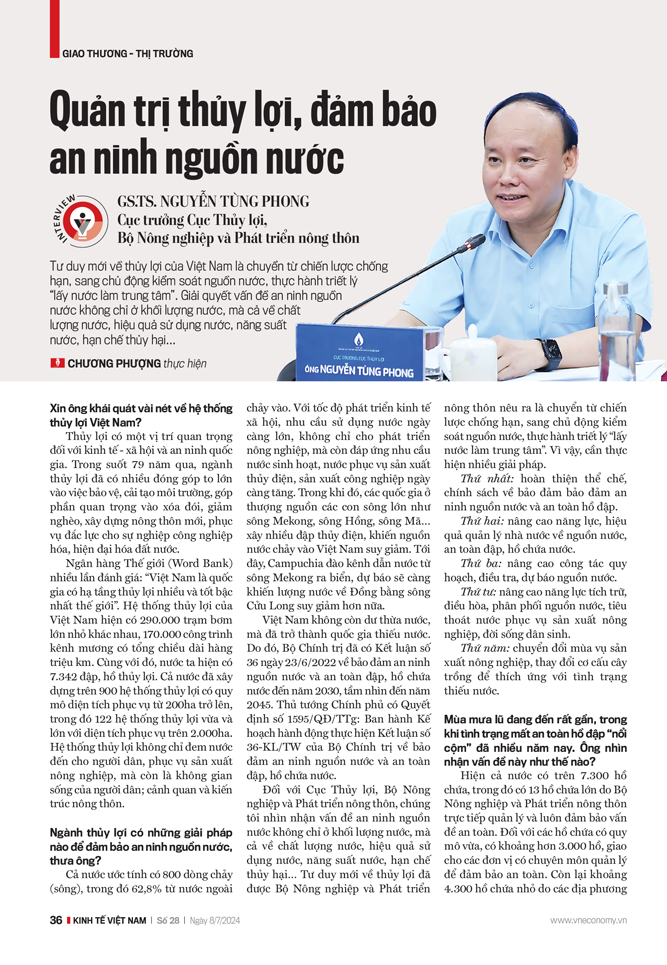
Vietnam and Laos collaborate to enhance water source security in the Mã and Nuen river basins
The project “Enhancing water security and environmental protection for the Ma and Nuen-Ca river basins and related coastal areas in Vietnam and Laos” is funded by the Global Environment Facility (GEF) with a budget of $8 million and will be implemented from 2024 to 2028. The project will benefit the following provinces: Hoa Binh, Nghe An, Thanh Hoa, Ha Tinh, Son La, Dien Bien in Vietnam; Xiengkhouang and Houaphan in Laos…



